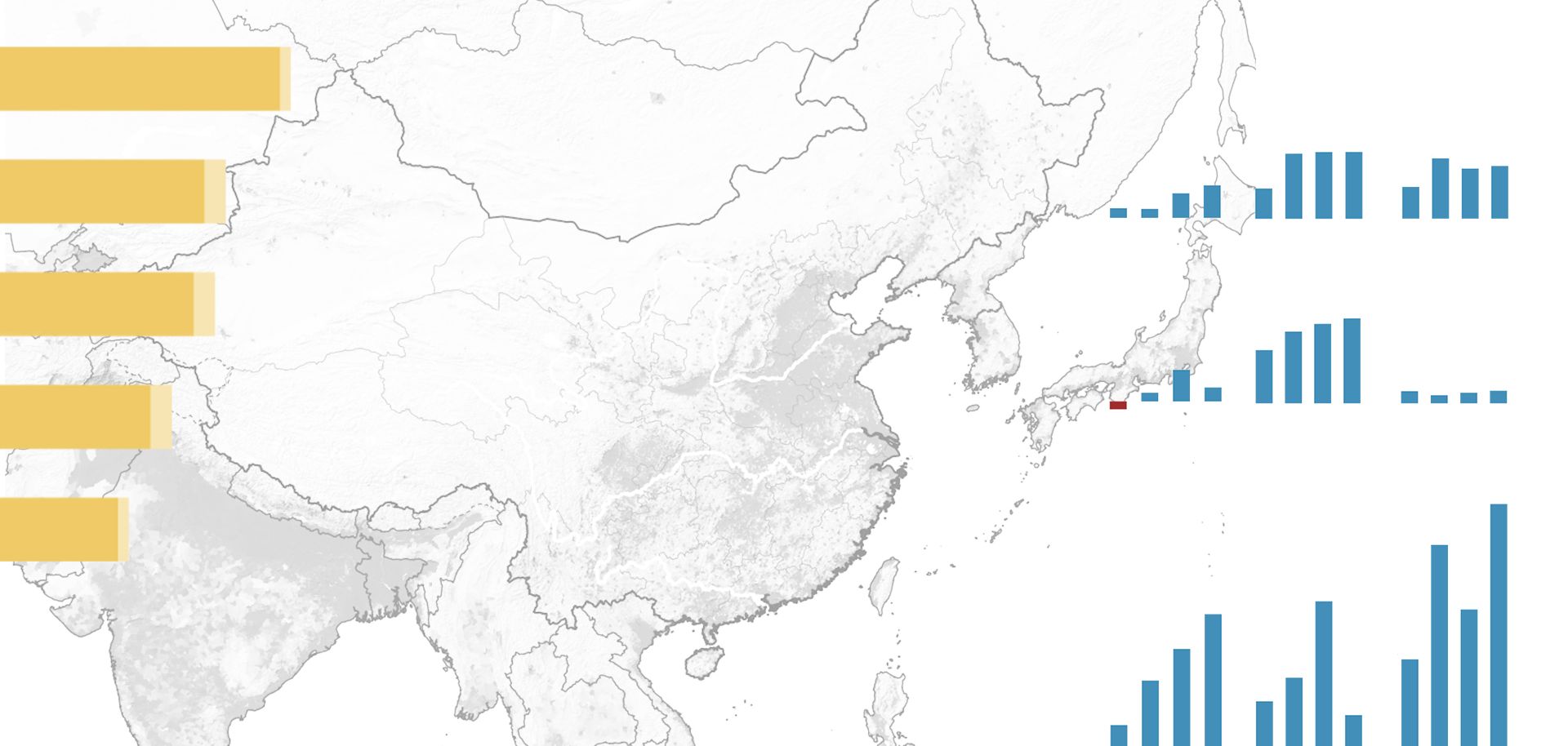
Japan's modern maritime strategy is determined by the country's security and economic needs, especially among the core Japanese islands. Tokyo's geopolitical environment unfolds in concentric circles moving outward from these islands. The first ring includes the East China Sea, the Sea of Japan, parts of the Yellow Sea and the North Pacific Ocean. This is Japan's immediate sphere of influence and historically has been the gateway for existential threats to the islands. Tokyo's interests here are shaped primarily by two factors: One is the need to protect the islands from any form of attack and guarantee security for Japan's immediate shipping lanes, through which the country receives its resources and raw materials. Another is Tokyo's growing desire to explore for undersea energy and mineral resources in its immediate territorial waters and the resulting need to secure those assets. Japan is active in the other seas of the first ring, especially the Sea of Japan, where it faces North Korea, but Tokyo's long-term strategic interests center on the East China Sea. The next concentric ring centers on the South China Sea, through which about 88 percent of the goods that reach Japan pass. Japan has significant bilateral trade relationships throughout the region, and much of its industrial base now sits in countries that border the South China Sea. Moreover, much of the sea is claimed by Tokyo's greatest strategic threat: China. Japan has a direct interest in making sure that China does not gain a naval and commercial monopoly in the region — either through overwhelming maritime power, energy exploration, trade or diplomatic influence. Japan has enhanced its naval relationships with countries such as Vietnam and the Philippines, even as Tokyo works to maintain a cordial political and economic relationship with Beijing. The third concentric ring includes the larger Pacific Rim, from Hokkaido to the Arabian Peninsula and south to Australia. This ring represents the real limits of Japan's strategic environment. While Tokyo is actively working to enhance long-range naval capabilities, as seen most clearly in its participation in counterpiracy exercises off the Somali coast, it is not yet building the capacity to sustain significant, protracted global force projection.



